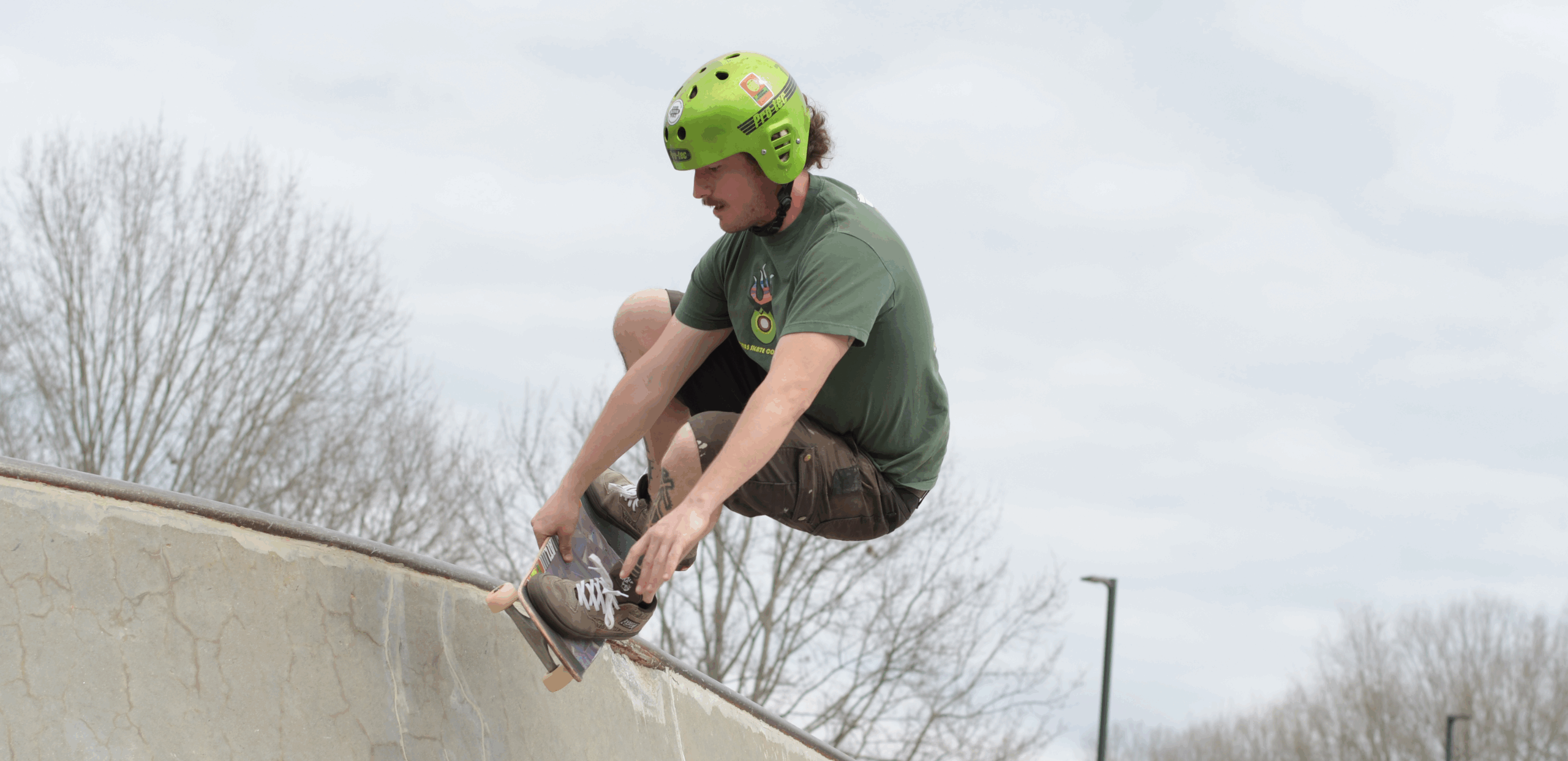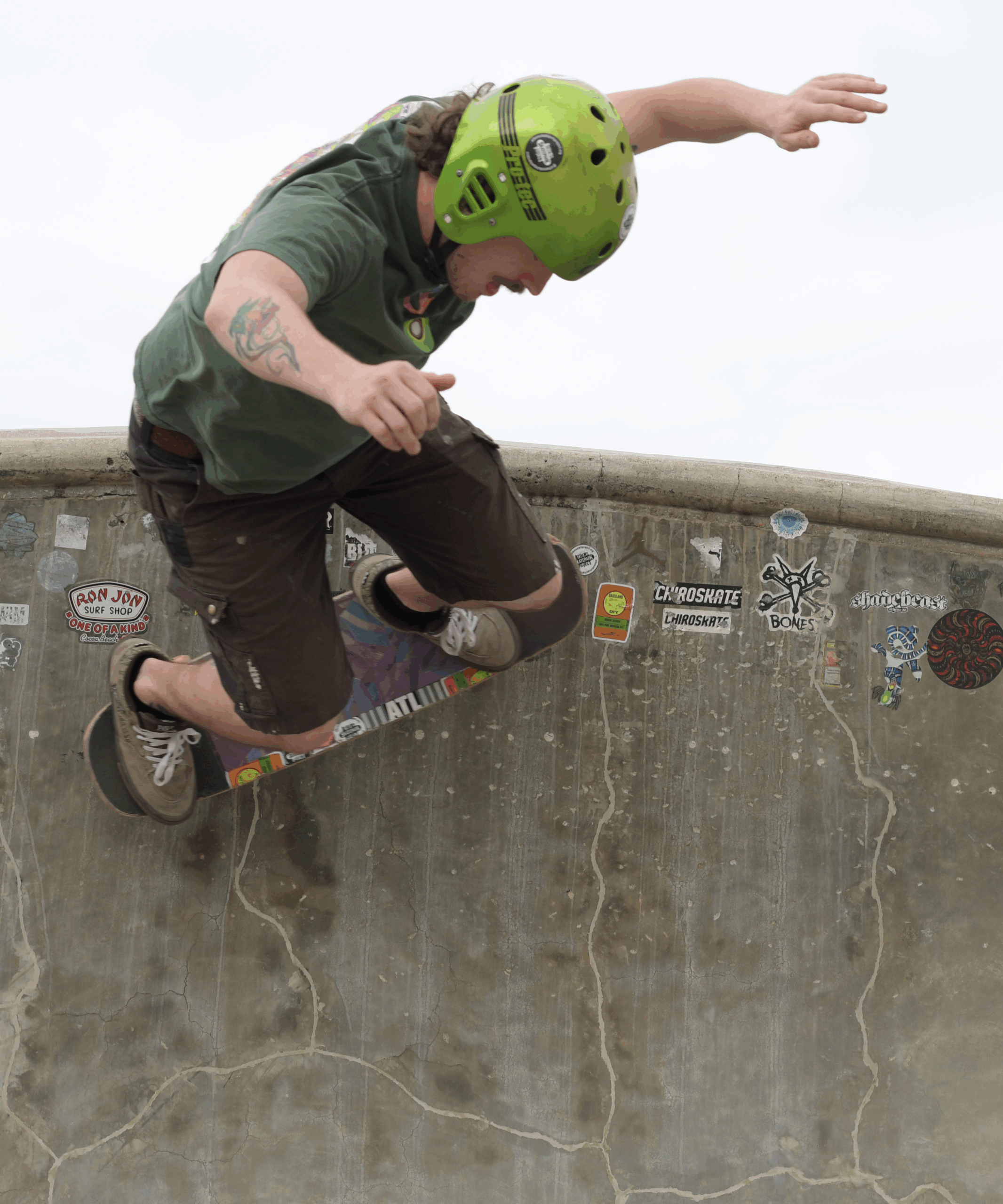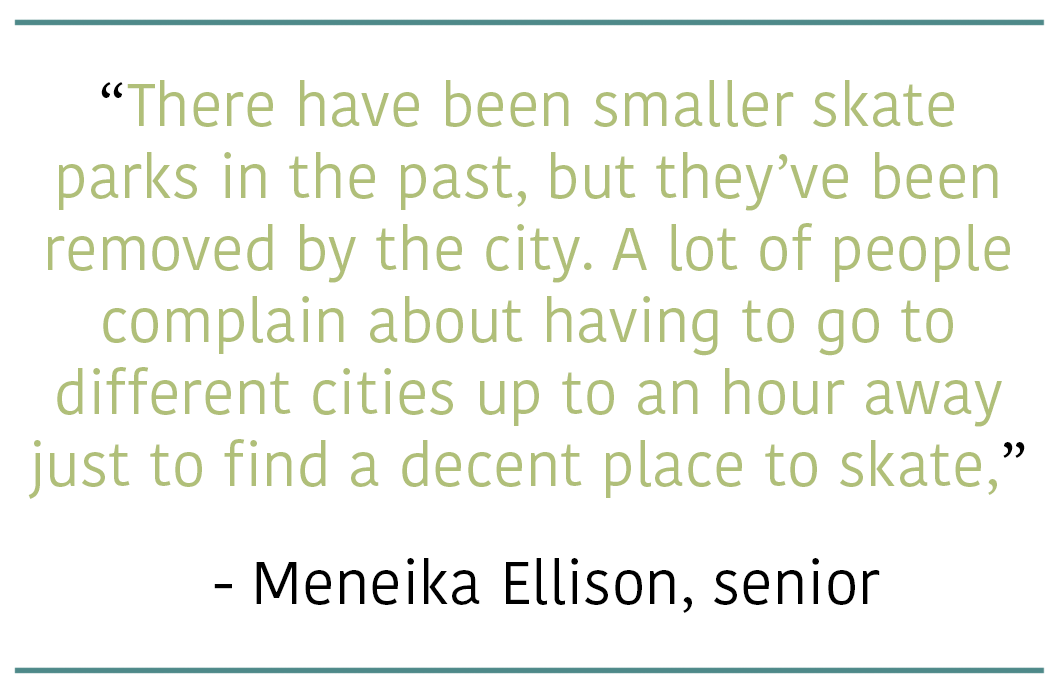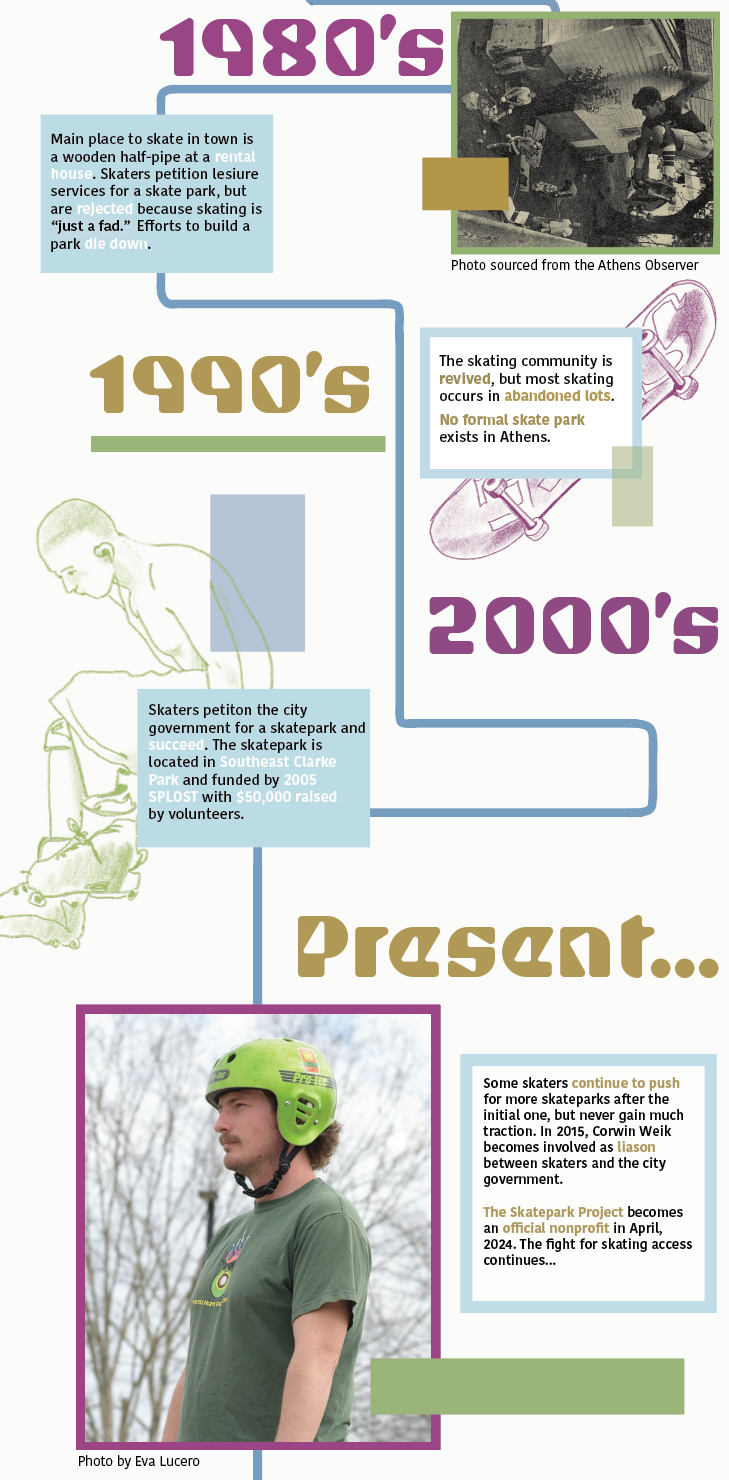
Athens Skate Project: New nonprofit is on a mission to provide skating for all
A 2019 study by researchers at the University of Southern California showed that skateboarding improves persistence and communication skills, reduces stress and improves cardiovascular health. Despite these benefits, skating is still a fringe sport. Athens only has one skate park, one with a steep learning curve. The Athens Skate Park Project is seeking to improve skating in Athens, one ramp at a time.
The first real skating community in Athens formed in the 1980s. When skating first gained traction as a sport in the 1970s, a small group of skaters built a wooden half-pipe in someone’s backyard. They petitioned the city government for a real skate park, but the city considered skating a simple fad and their movement lost traction. The community endured, and by the 1990s it was a major factor in Athens. Skating in abandoned lots, they continued fighting for a skate park. In 2005, that dream became reality. Using funding from the 2005 SPLOST, $50,000 of their own funding and a grant from the Tony Hawk Foundation, the city built the Skate Park of Athens in Southeast Clarke Park.

The project continued to fight for more parks but couldn’t find any more traction. In 2015, Corwin Weik, director of the project and 2014 Cedar alumnus, was given the reins and now serves as a liaison between the city and the skaters. The project became an official 501(c)(3) nonprofit this year, allowing it to petition more effectively and breathe new life into the movement.
“This year, I finally decided that the best way to do it is to start a non-profit. It started out of the necessity to have a strong central voice and a collective of individuals with the same goal,” Weik said.
While the current park is very large at 14,000 square feet, almost 8,000 of those are angled. The bowl-style park is ideal for experts doing tricks but can be hard for novices learning the basics. Since 2005, the high-octane Tony Hawk brand of skating has gone out of style, and street style courses with small jumps are more popular.
“It’s not exactly beginner friendly, but if you do start there, like I did, you are likely to progress a little bit faster than other people,” said Cedar Shoals senior Meneika Ellison, a beginner skater.
The Athens Skate Park Project primarily aims to build a similarly sized park behind the current one, in the more beginner-friendly street style. They also hope to build another skate park on the West side. While the West side has a large skating community, there are no designated skate parks.
The eventual goal is to place skate environments all across Athens. As the city renovates and expands the Greenway and Firefly Trail, the project hopes they can place small skate obstacles strategically. These trails are the heart of Athens leisure services, and placing skate parks near them would solidify skating as a major activity.
“There have been smaller skate parks in the past, but they’ve been removed by the city. A lot of people complain about having to go to different cities up to an hour away just to find a decent place to skate,” Ellison said.
While the project has made a large impact on the community, it has also faced major setbacks. In the past, they have used their own funds to build mini skate parks out of concrete tubes and wood on private property. These parks allow them to design their own courses without having to negotiate with the city, but they ultimately failed. When not in use, they were often used as shelter by the homeless. When alcohol and drugs became an issue, the city bulldozed the parks, leaving the project out $6,000.
Another setback is fatigue from a 10 year long campaign for better skating resources. Many donors, skaters and city officials are tired of pouring energy into the project.

“My biggest challenge was beating a dead horse. Some people don’t want to be involved due to the potential of it never happening,” Weik said.
However, some are opposed to the project. For many, the word skater evokes imagery of rebellious teens and dangerous outcasts. Skating has developed a somewhat violent image with the public, and many people don’t want more skate parks.
In reality, skaters are not particularly violent or dangerous. Despite skating’s rough image, it creates a positive environment. Skating provides a more accessible form of exercise than expensive team sports, as well as regular exercise, which doesn’t provide the same community. The activity is also affordable, since all you need is a skateboard, which lasts for years, and a skate park, which is free to the public.
“I grew up underprivileged, and all I needed was a skateboard. There were no yearly dues. There was no upkeep,” Weik said.
Beyond the active benefits, it’s also a great way to connect with community leaders and role models in a non-confrontational environment. The nature of skating allows for an individualistic experience or a social one, depending on personal preference. It’s also a welcoming environment, and there’s no fear of being benched or failing tryouts.

“The community is the biggest benefit of the skate parks. It’s accessible to all ages. There’s a low barrier to entry, and it gives kids an identity. Skateboarding can be whatever you want. Baseball is baseball, or basketball is basketball, and there’s only one way to do it. At a skate park, you’re accepted for being there, not for being the best.” Weik said.
Building more skate parks also reduces the risk to skaters and the public. Skating is often associated with trespassing on private property or endangering pedestrians and cars with high speed stunts in public areas. With more skate infrastructure, skaters are more likely to skate in legal areas and stay out of trouble.
“The community behind it is great. I love going to the skate park, seeing people do cool stuff, and then having them teach you how to do it. It’s a really nice thing to experience,” Ellison said.
The project hosts monthly meetings on the third Sunday of every month at Nuçi’s Space as well as other events.. The project is currently fundraising, and it is currently at 20% of their $100,000 goal. Some of their upcoming events include the Ramp Jam contest on March 22 and the Athens Skate Park 20th Birthday Bash on April 19-20. More information about these events, as well as donation and contact information, can be found at athensskateparkproject.org.
Skate parks are some of the most valuable leisure infrastructure, and Athens is seriously behind other cities. The Athens Skate Park Project is one of the leading advocacy groups working to improve these issues.
“The goal is to put skate parks in every borough, every neighborhood and every part of Athens. They could be integrated into every place where there’s a playground or soccer field already, and on the Greenway or near the neighborhood pool. I would like the Athens Skate Park Project to make Athens an example for communities in the south on how to properly integrate skateboarding and skate parks into their leisure services,” Weik said.



